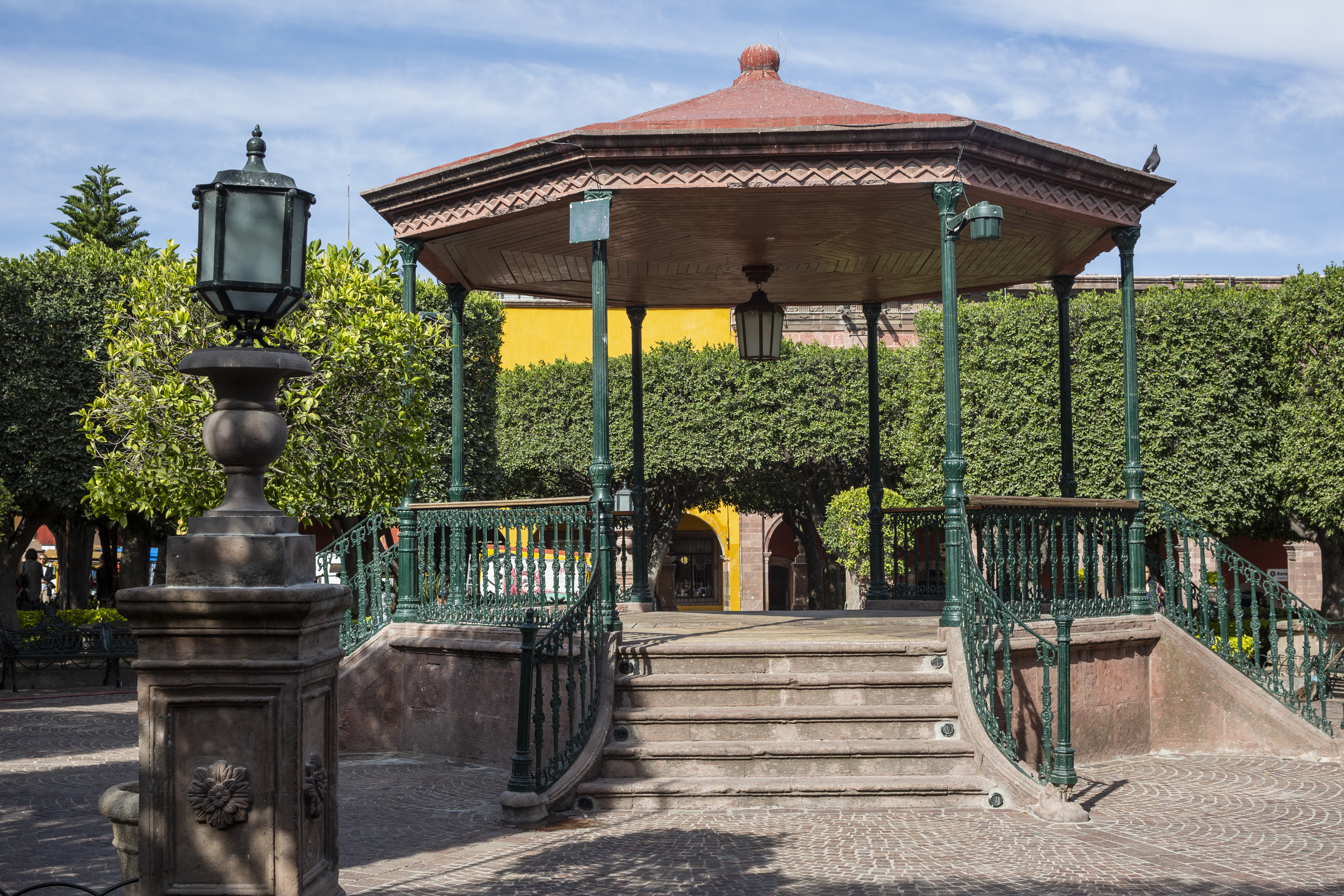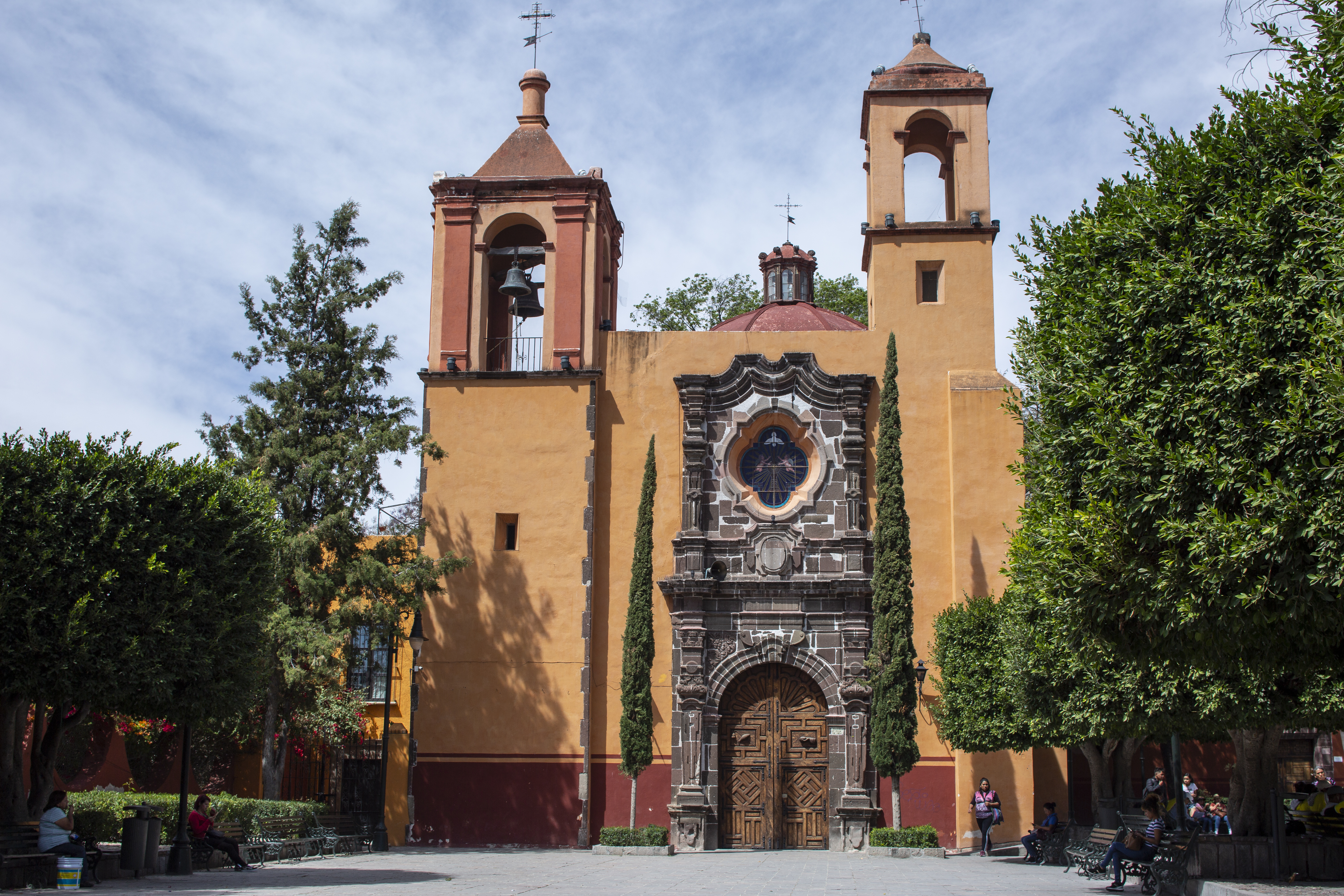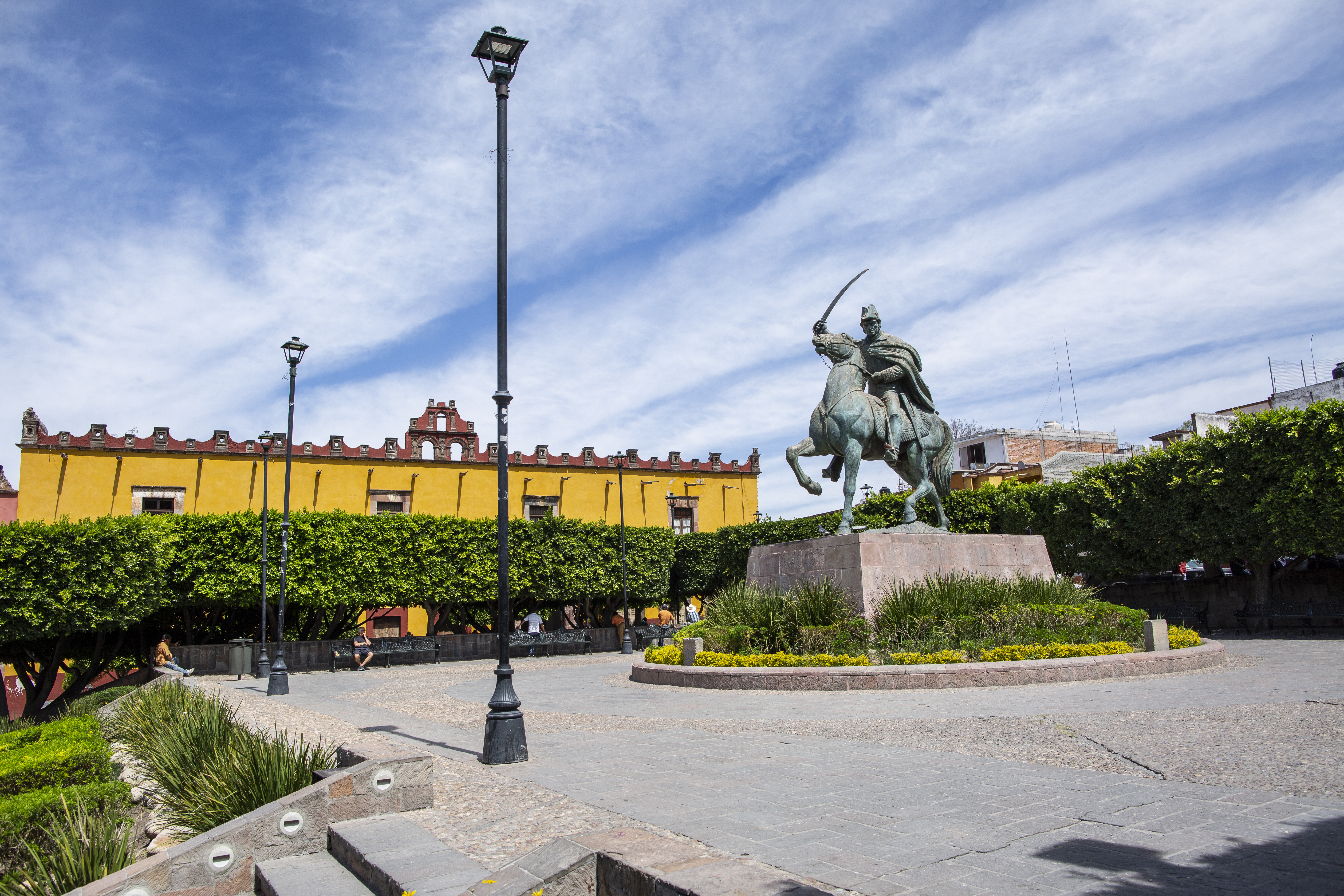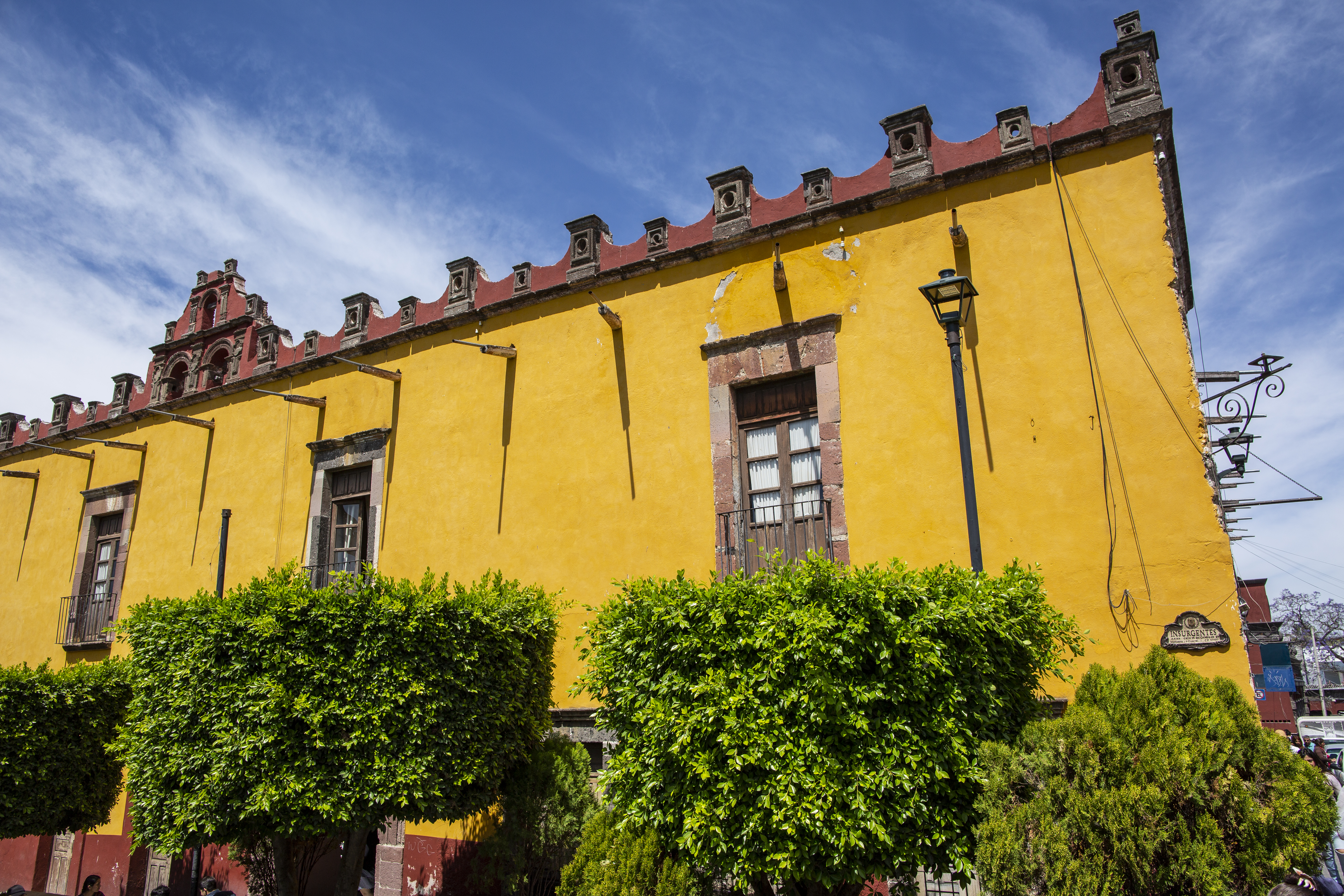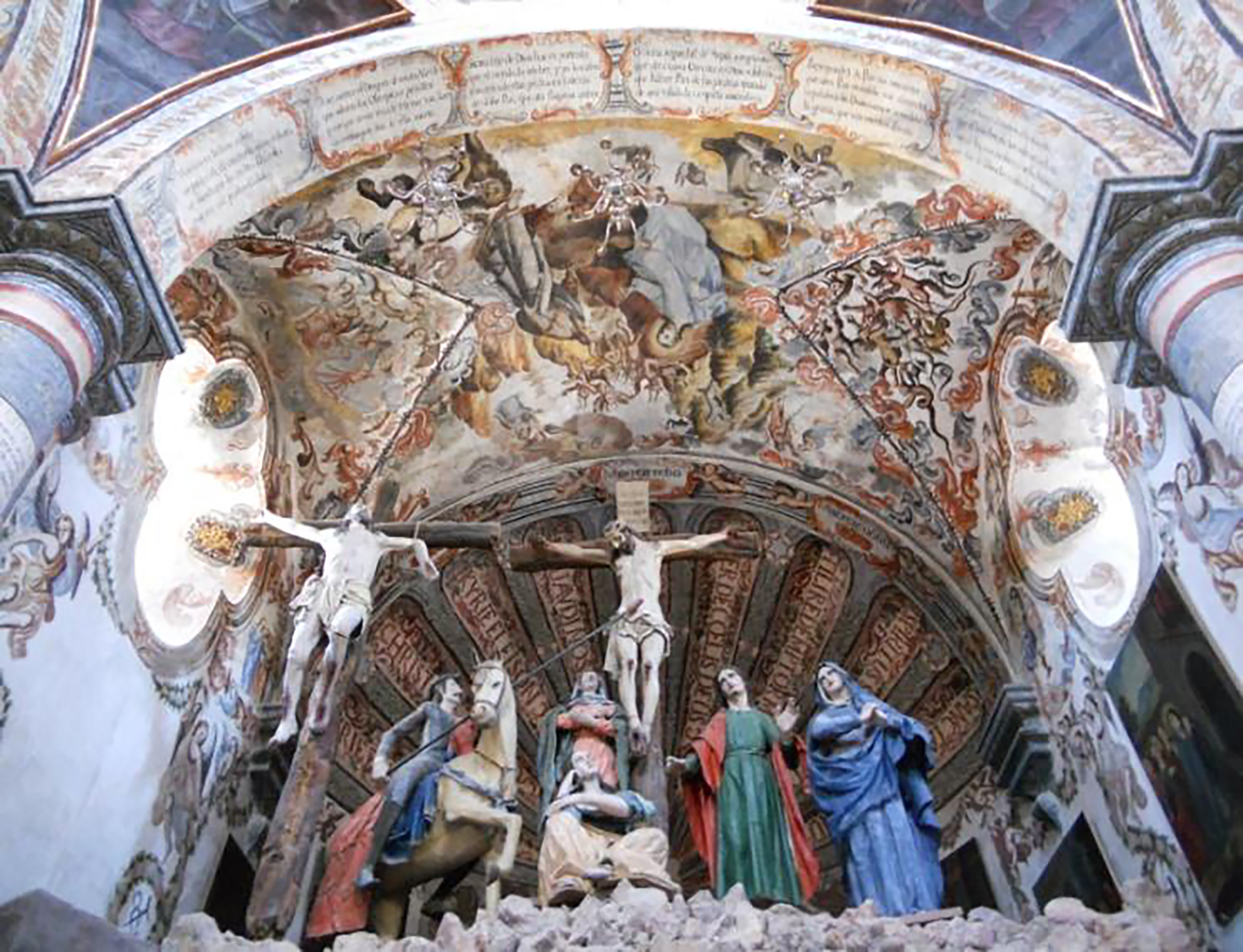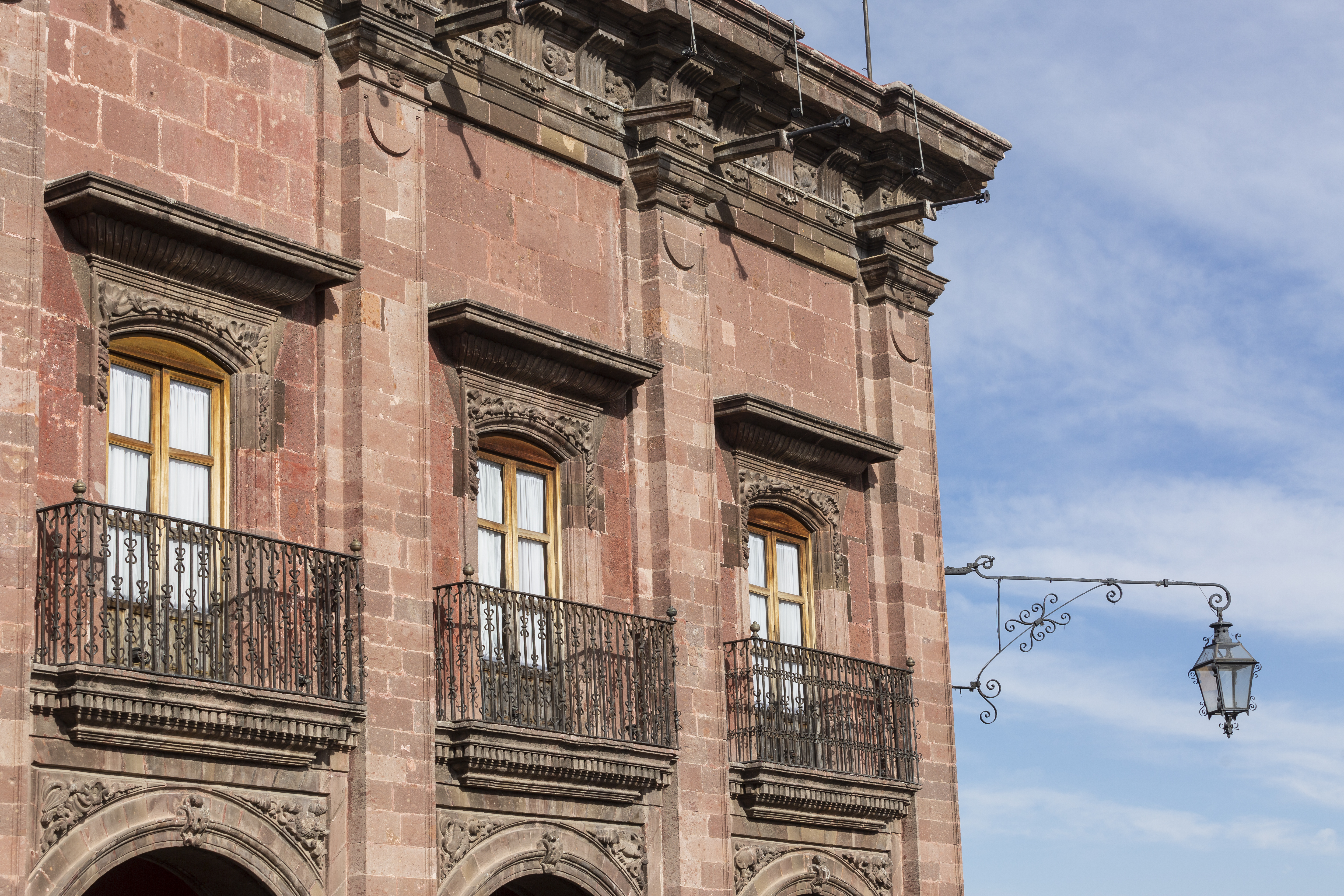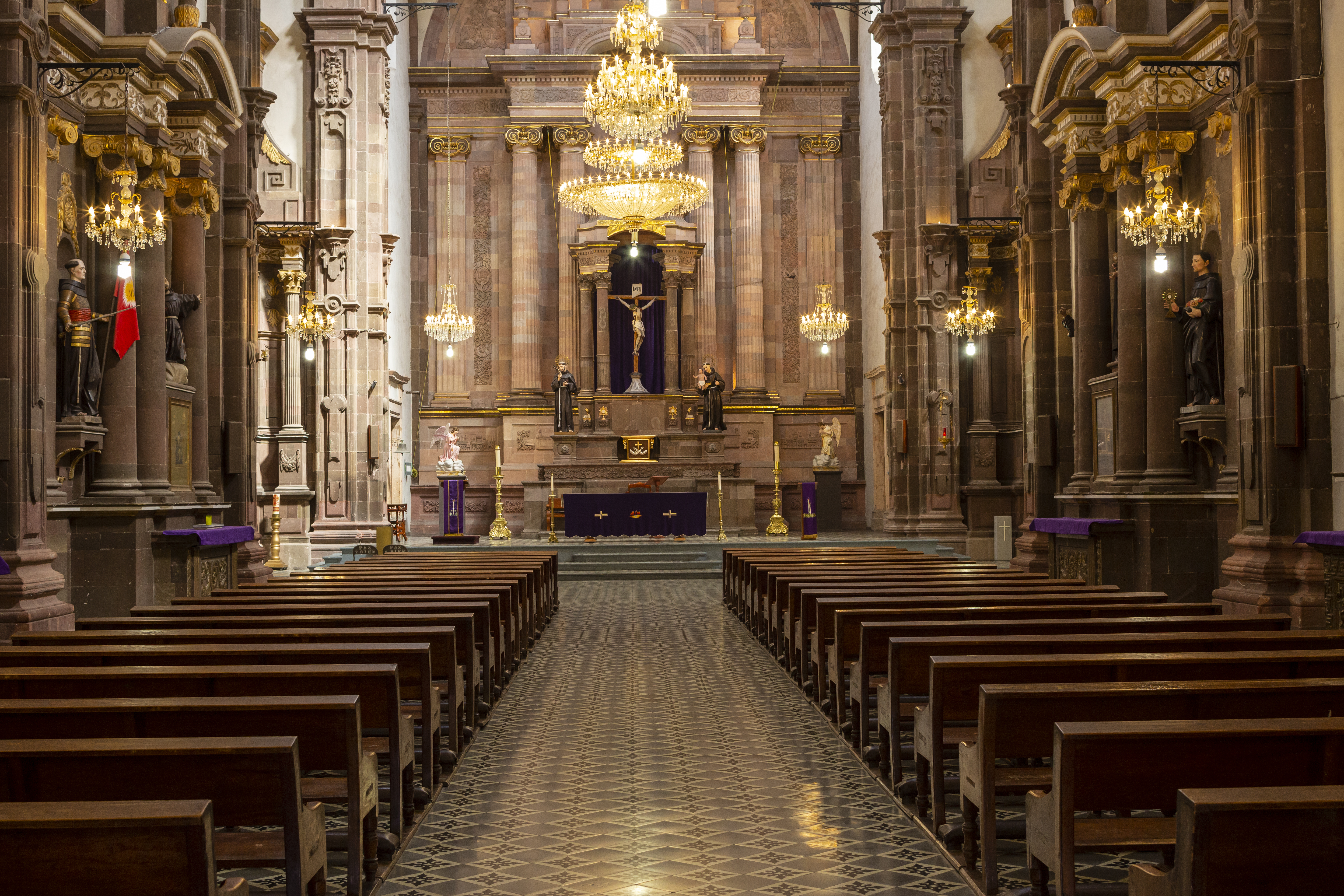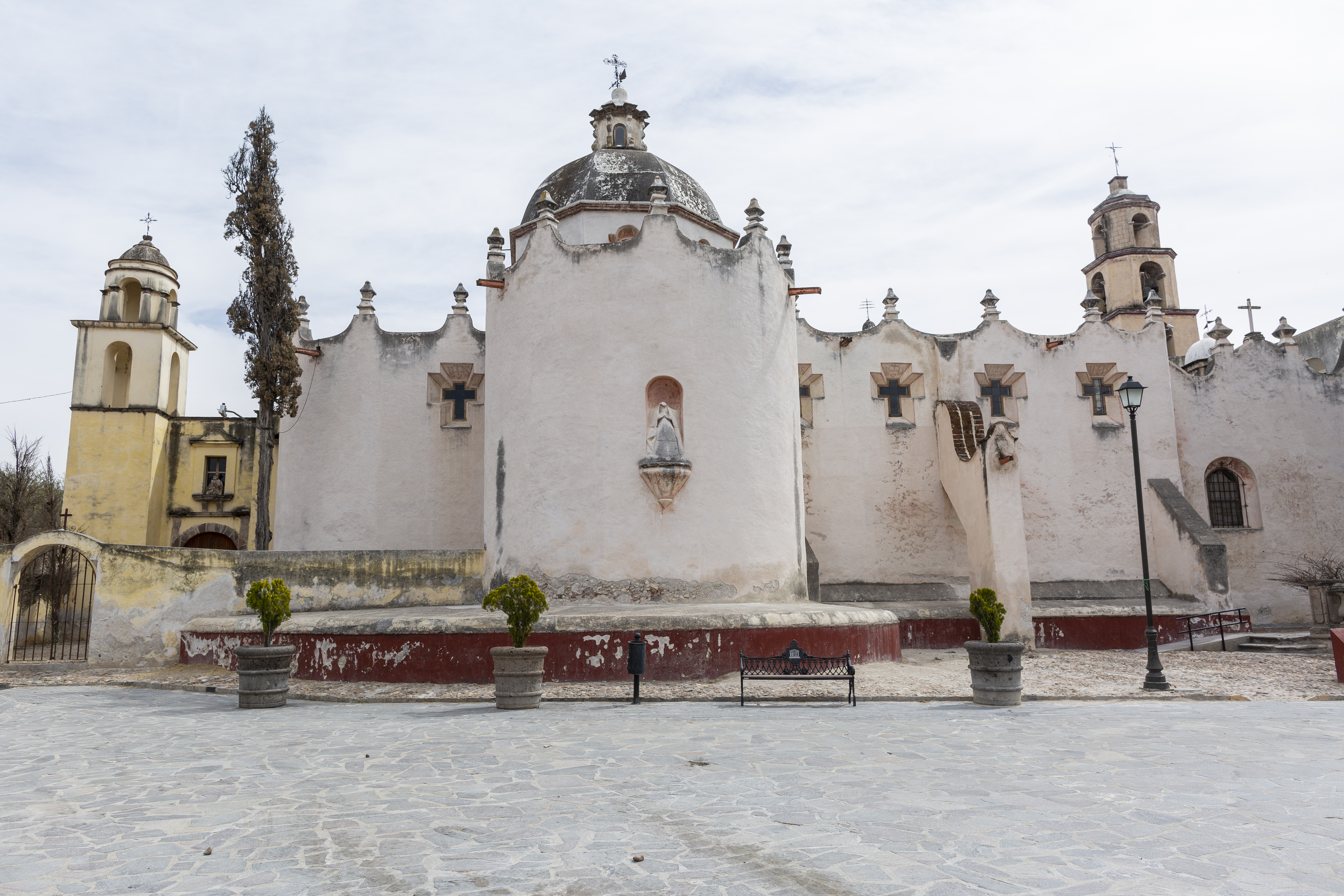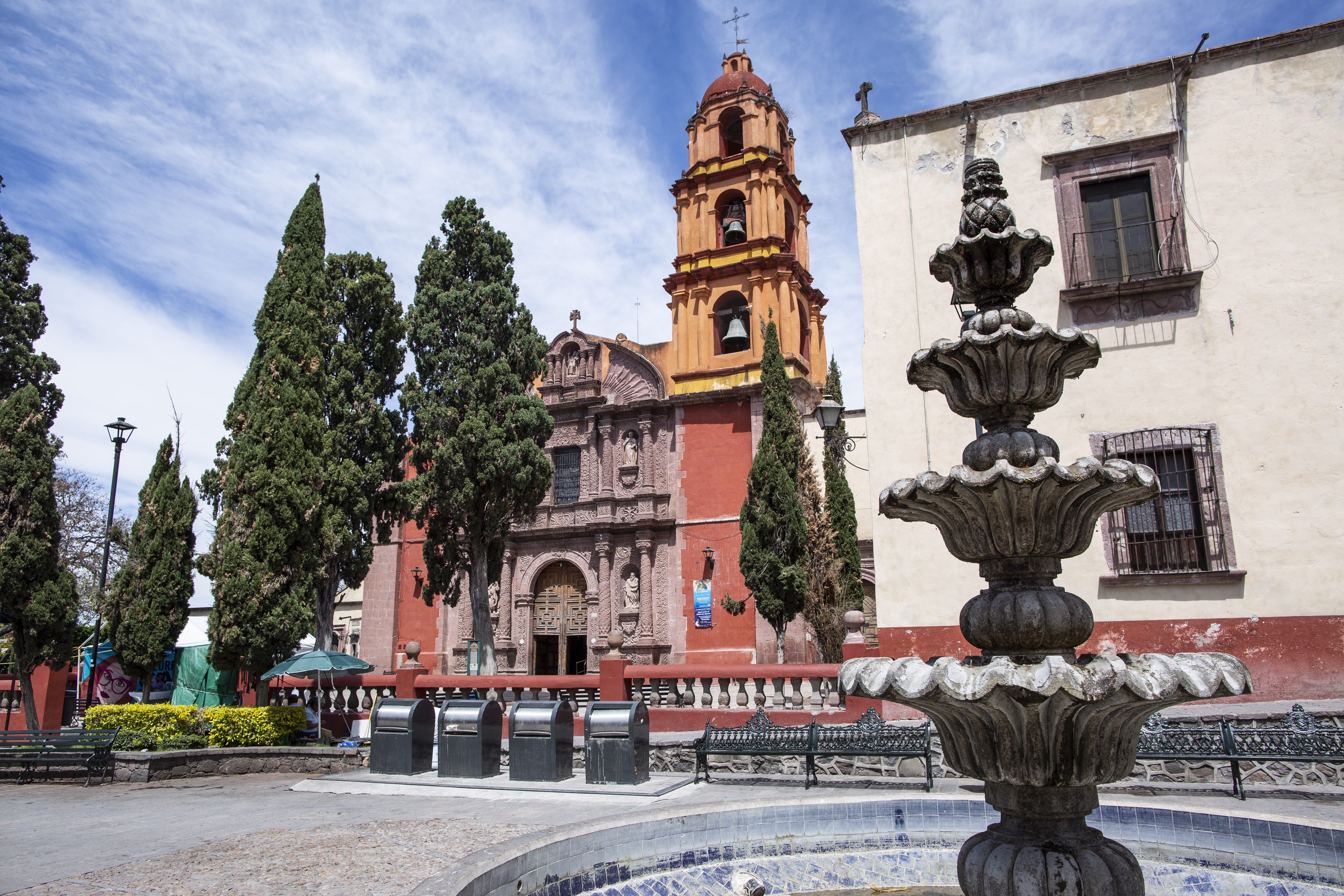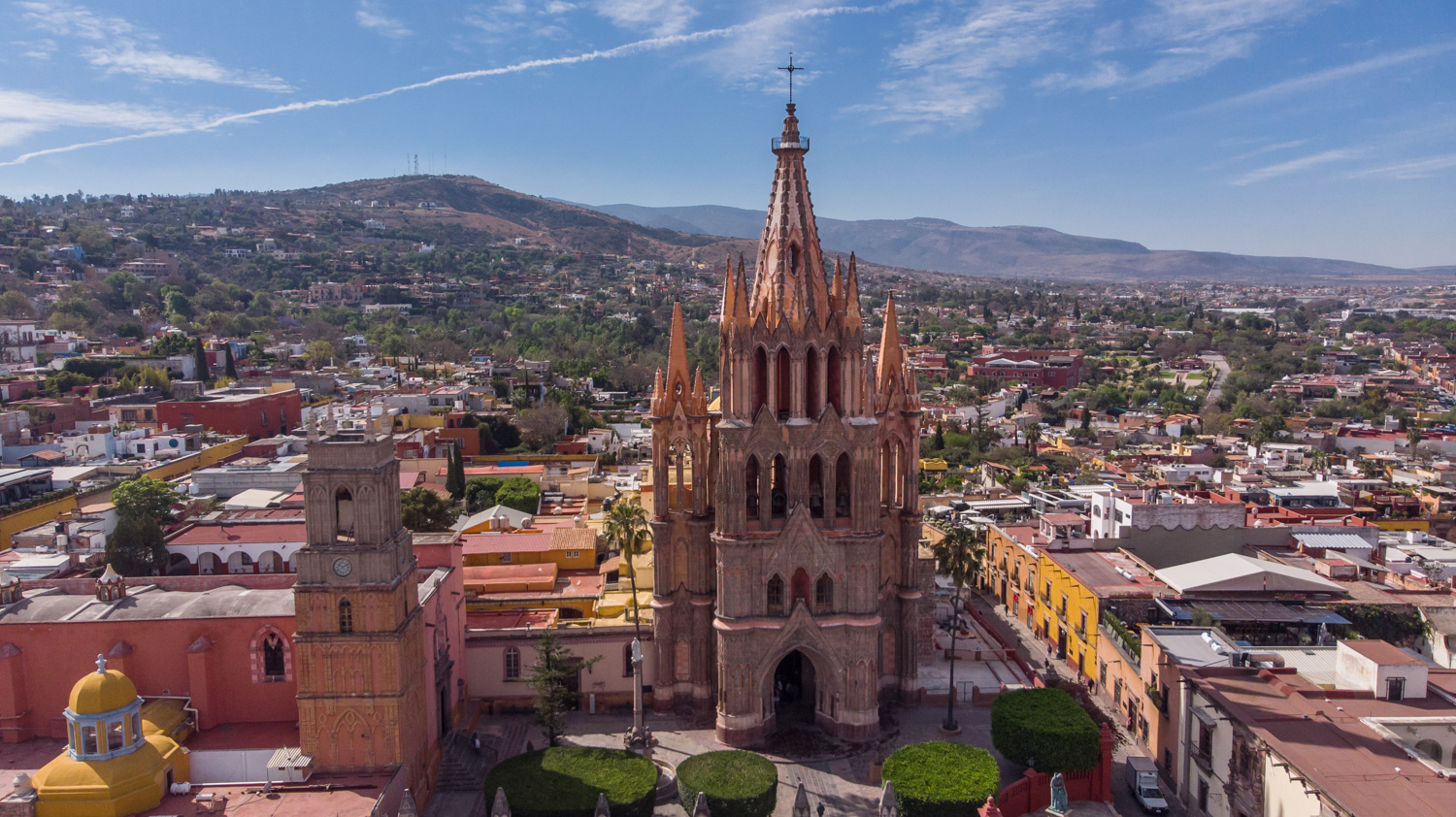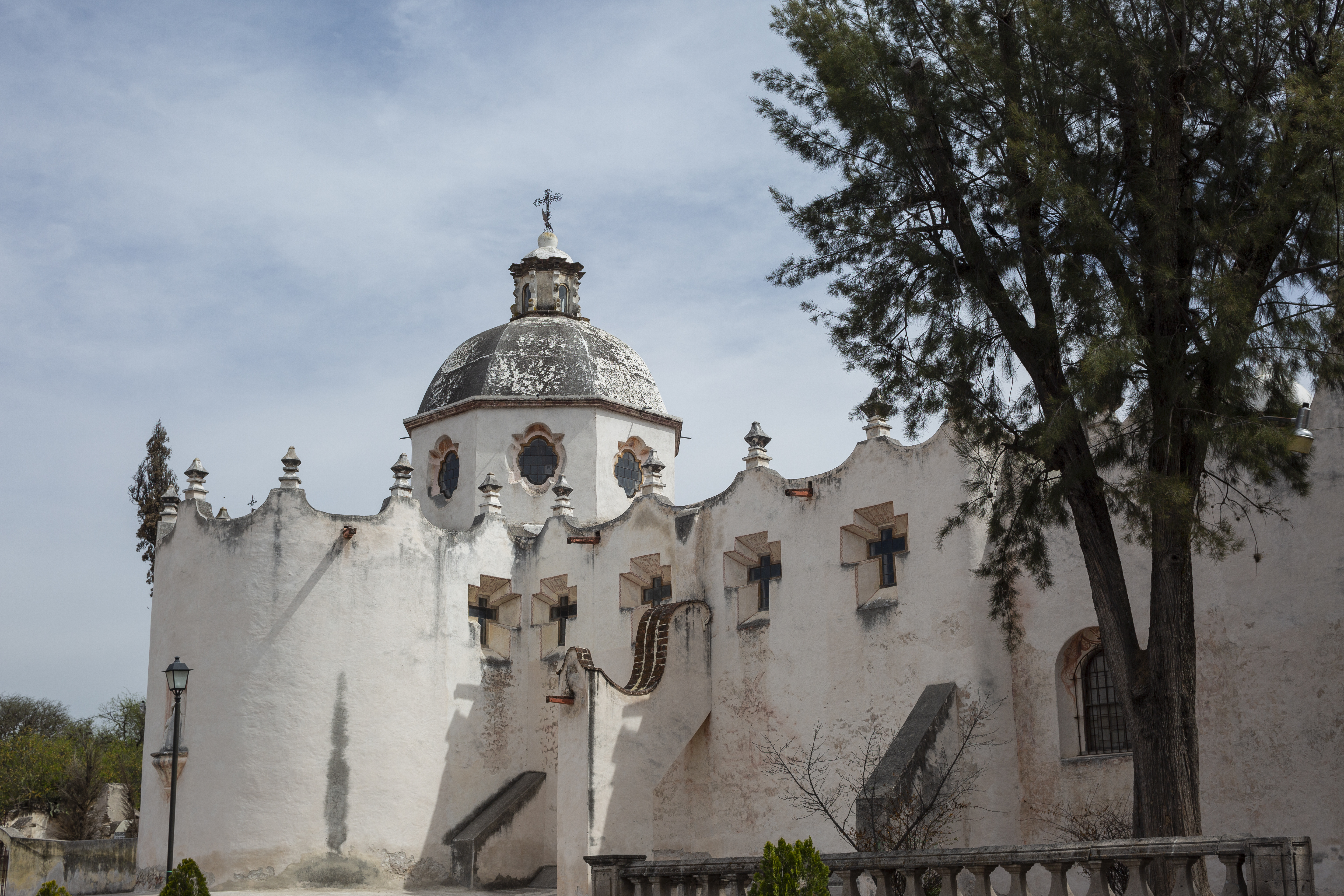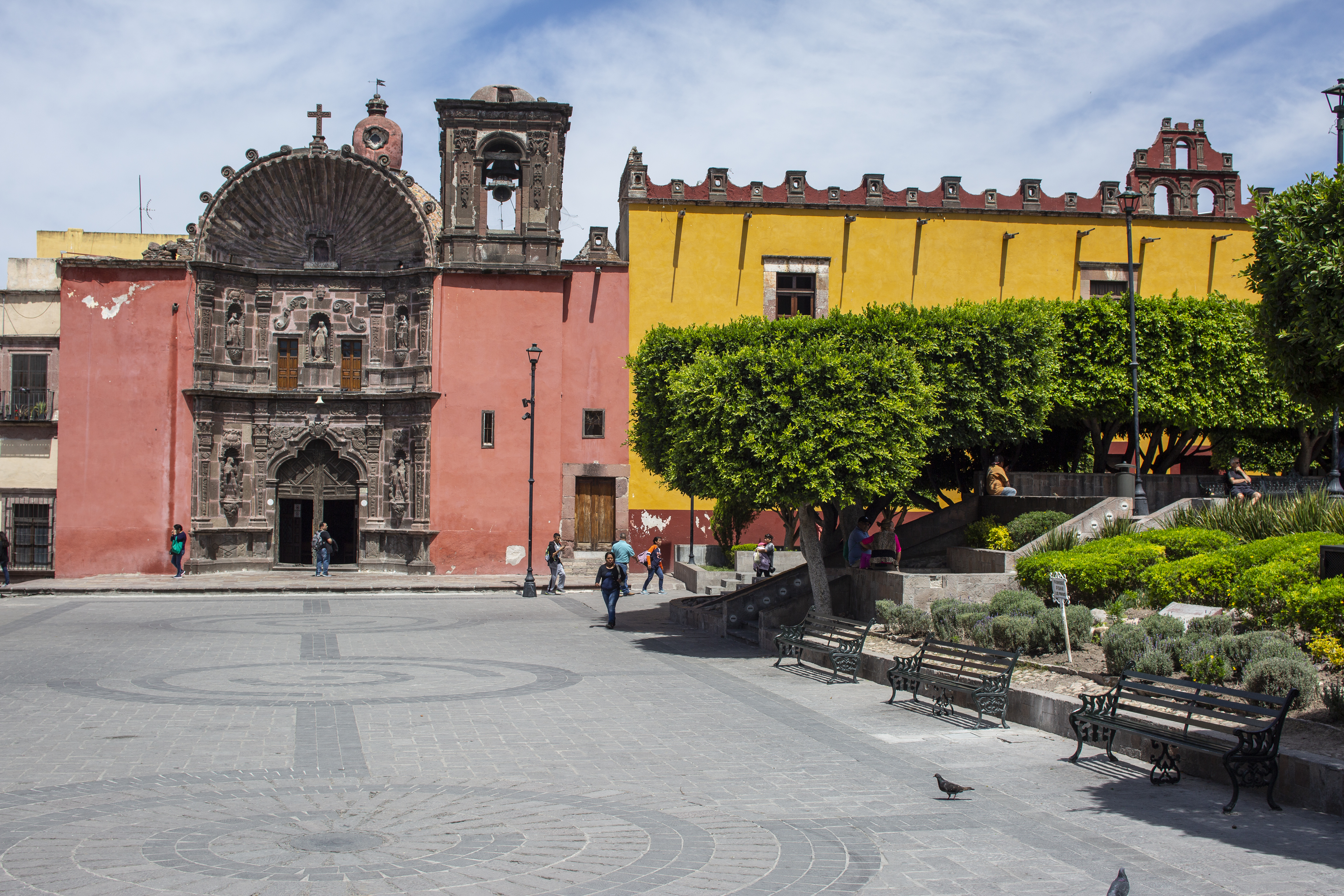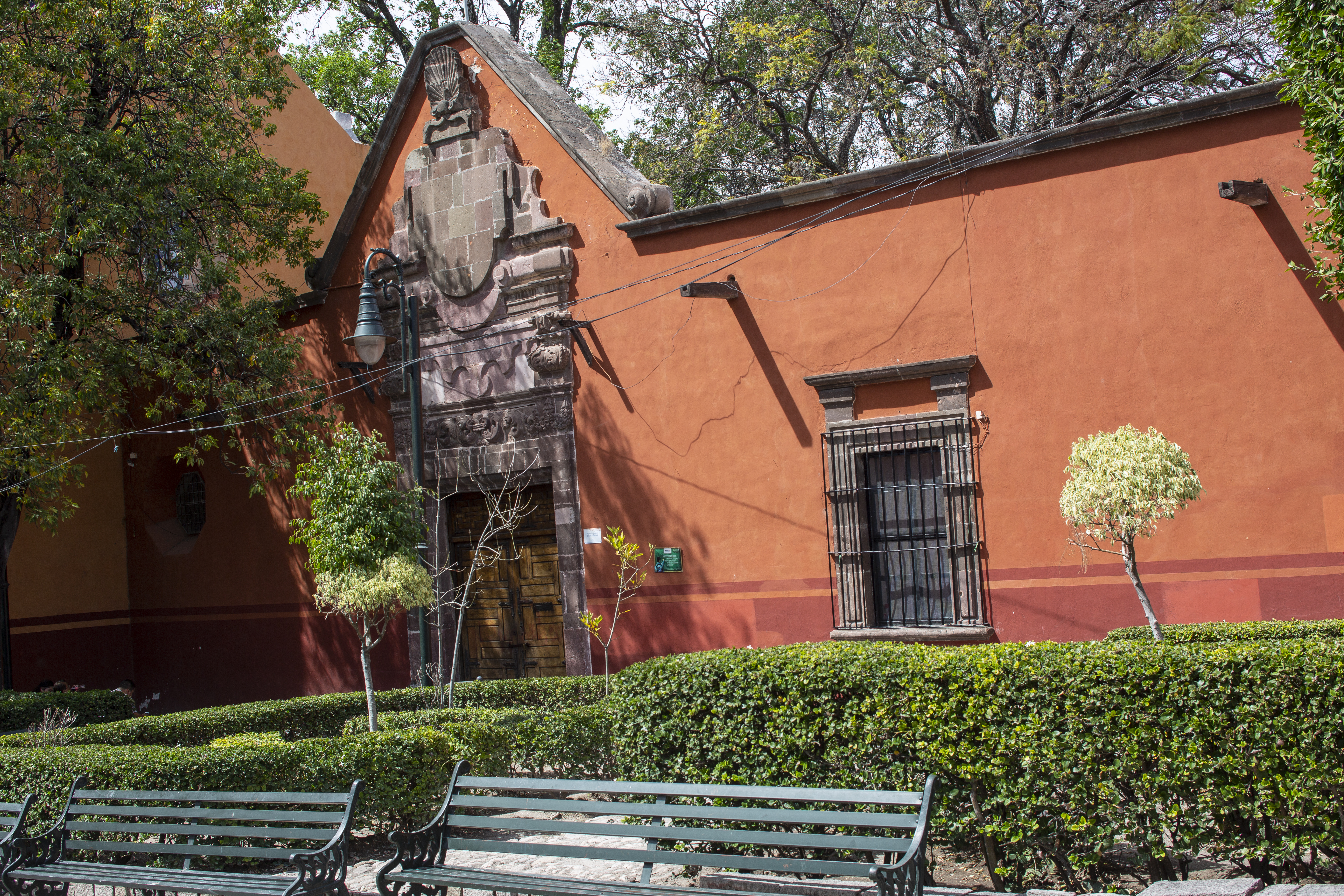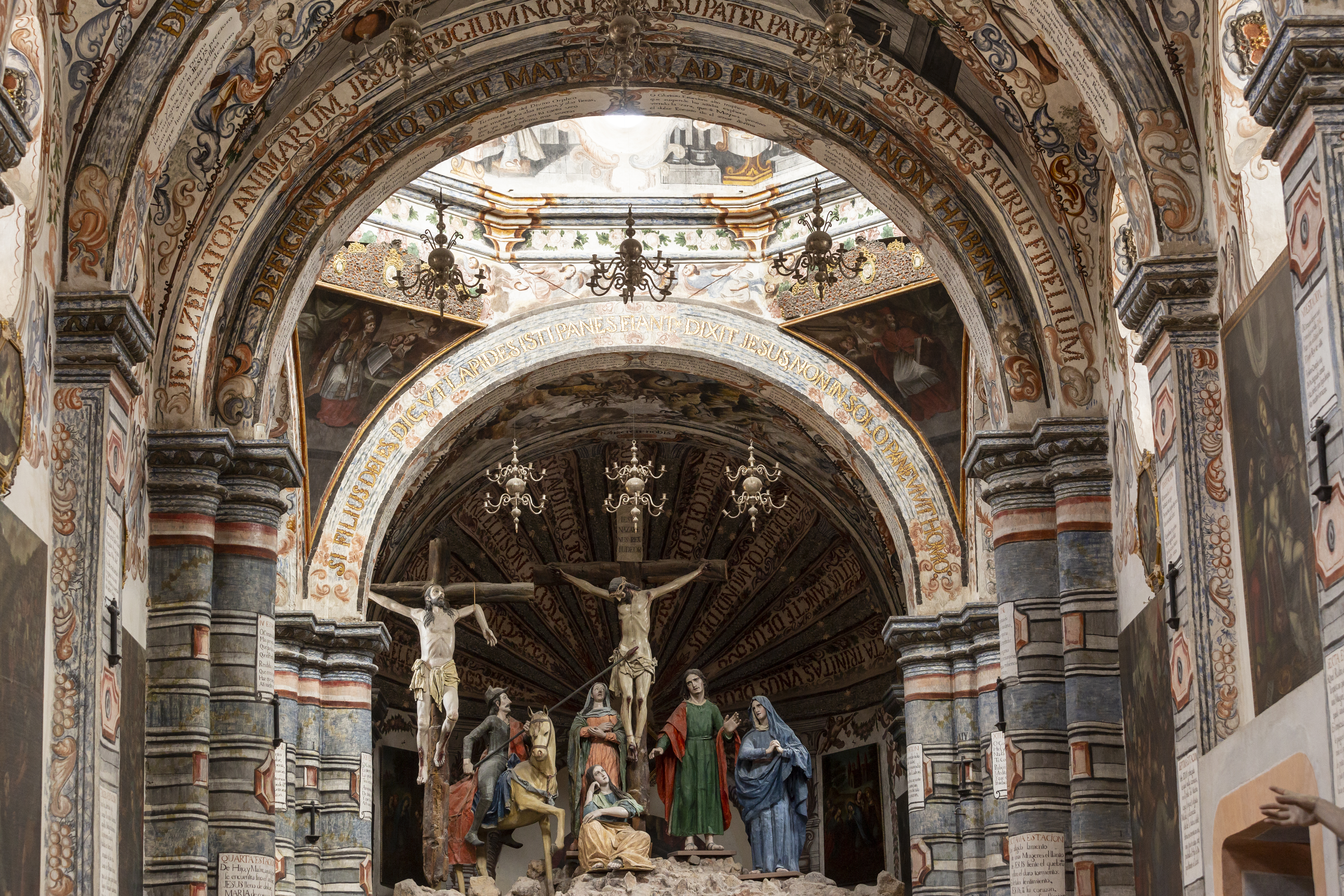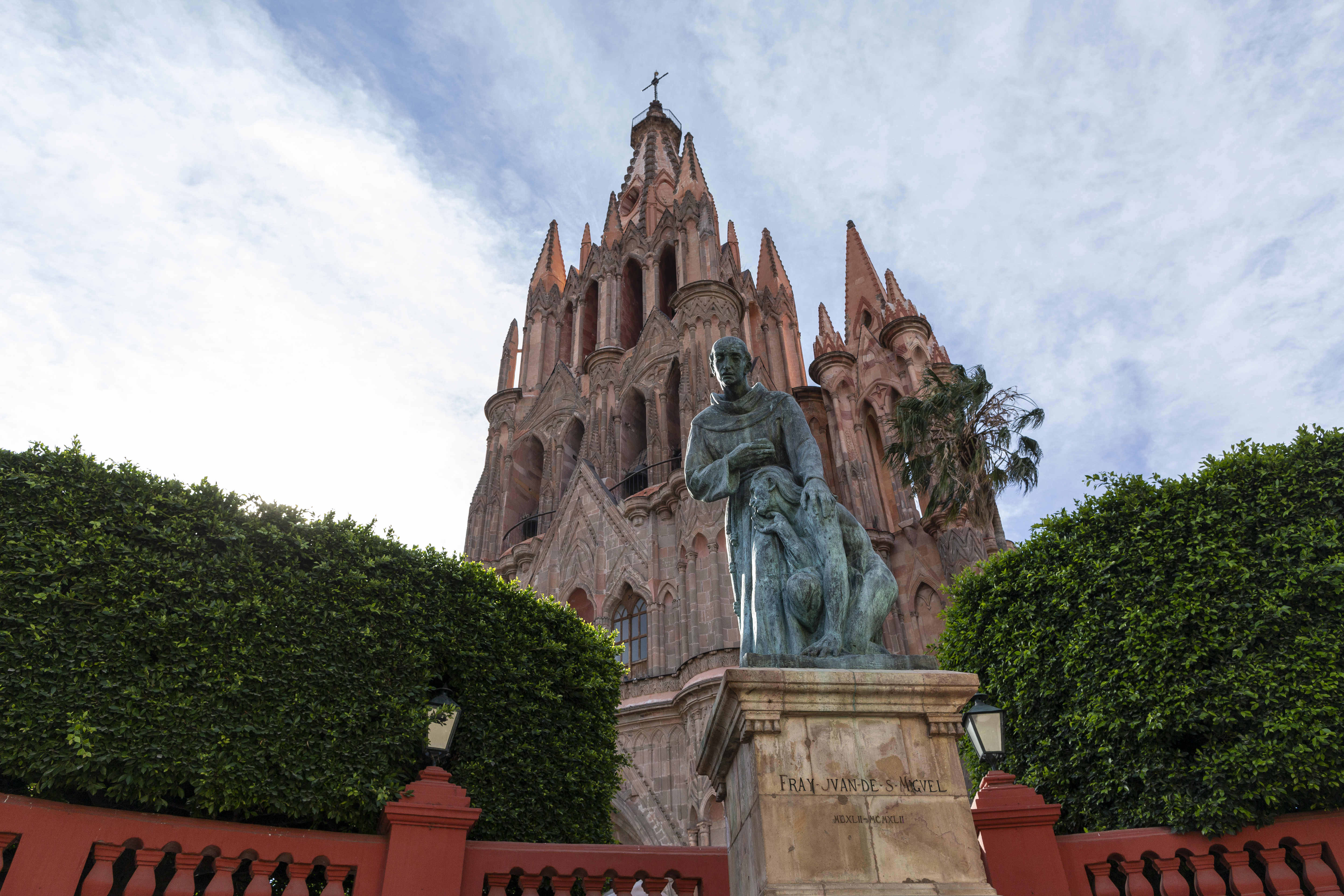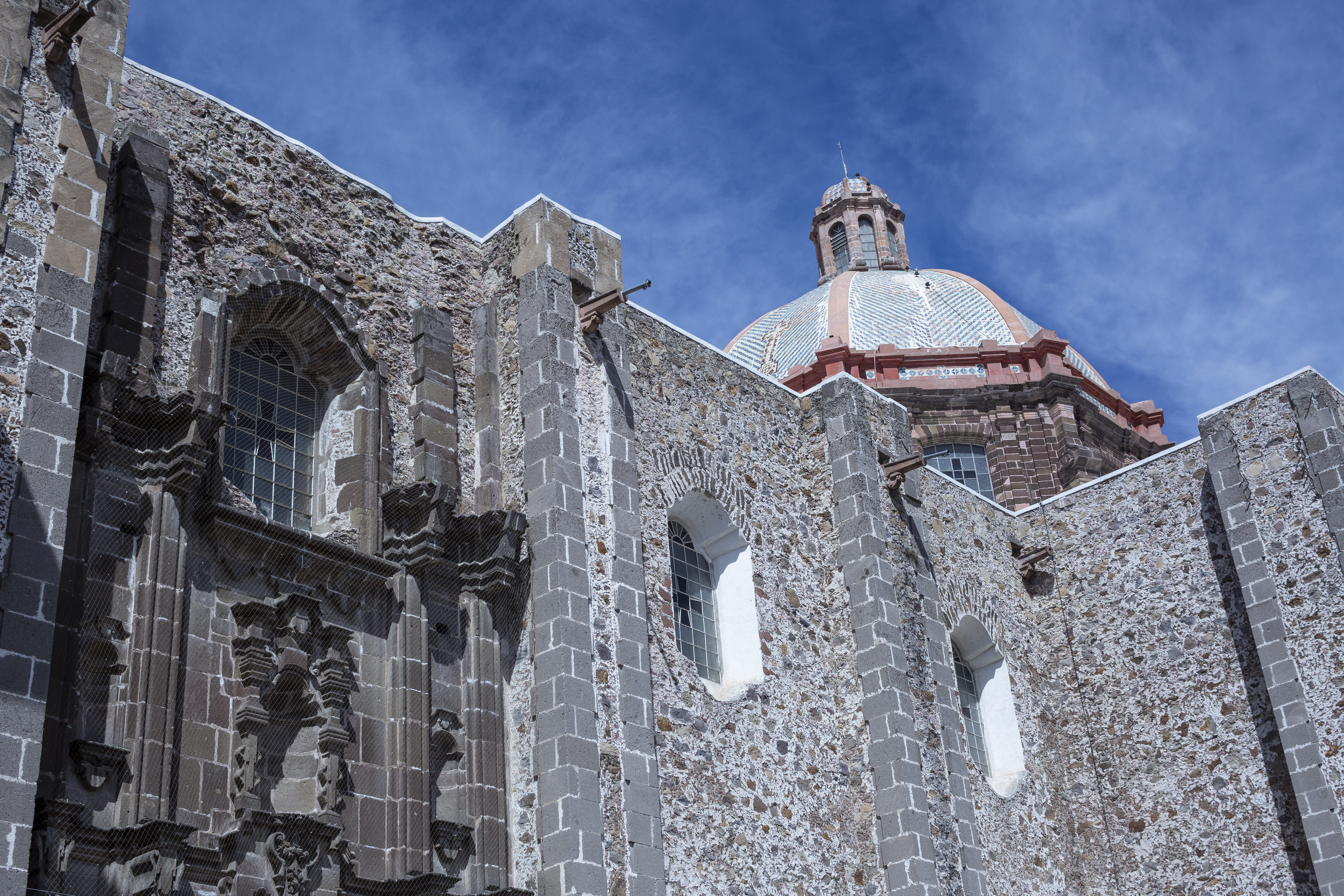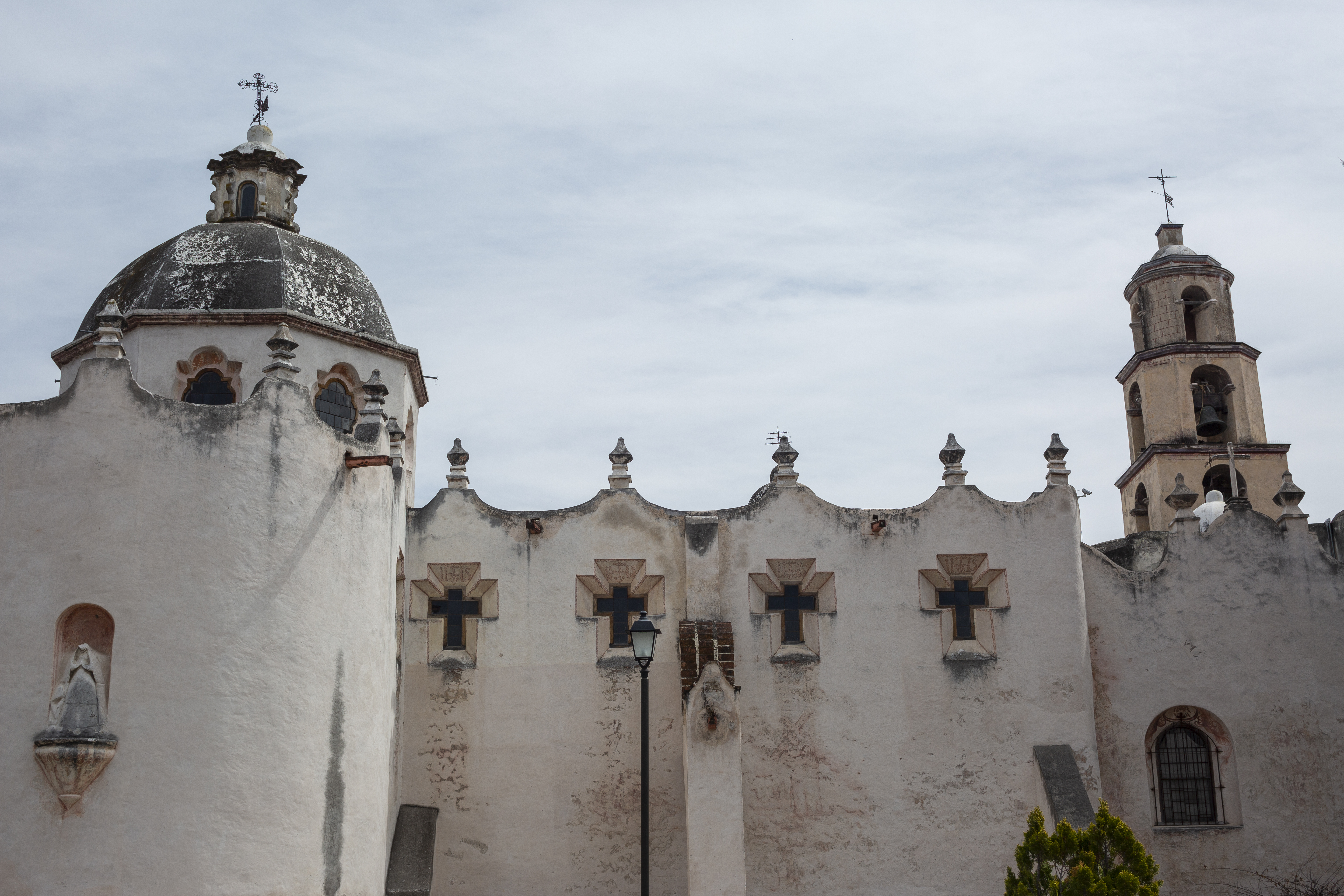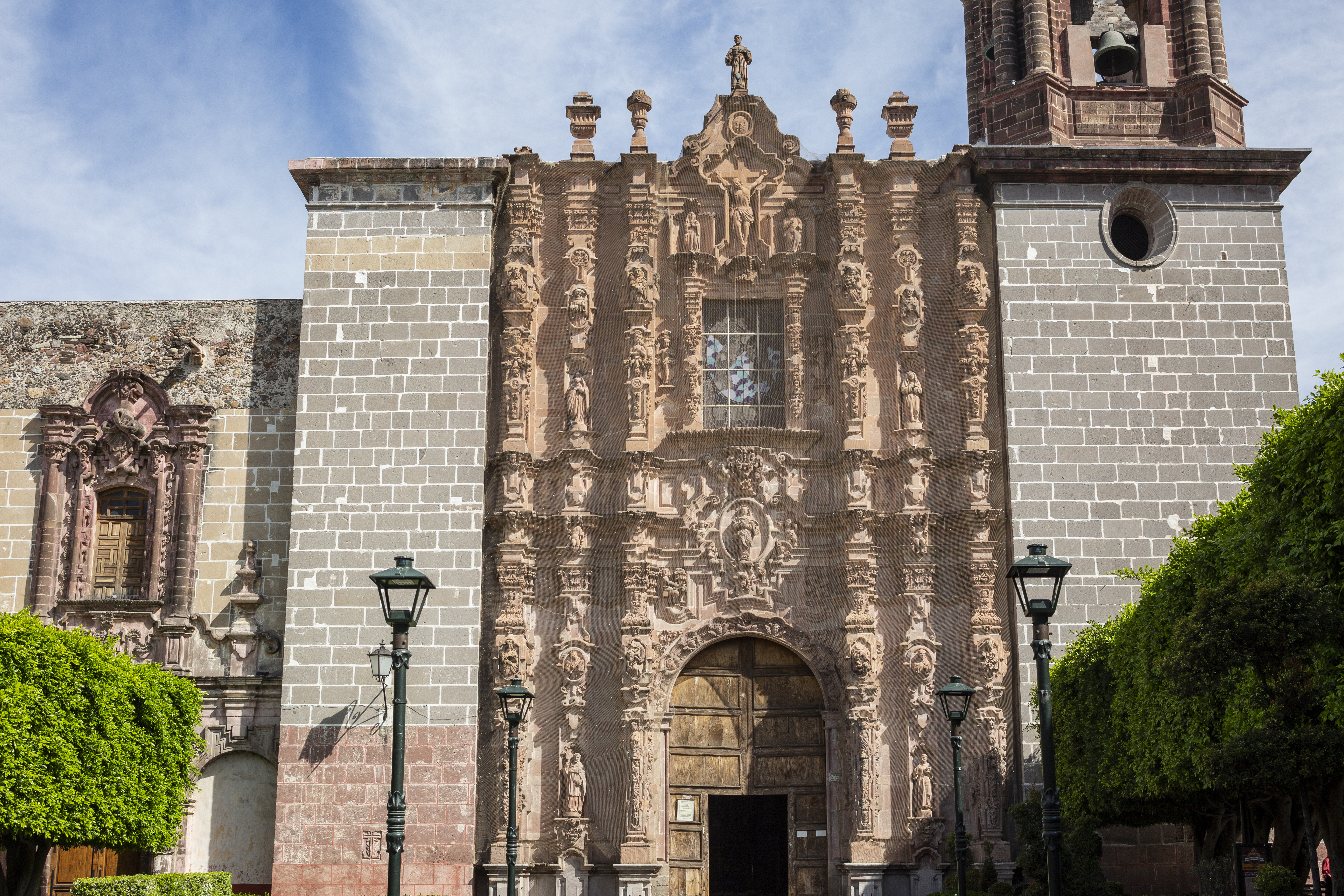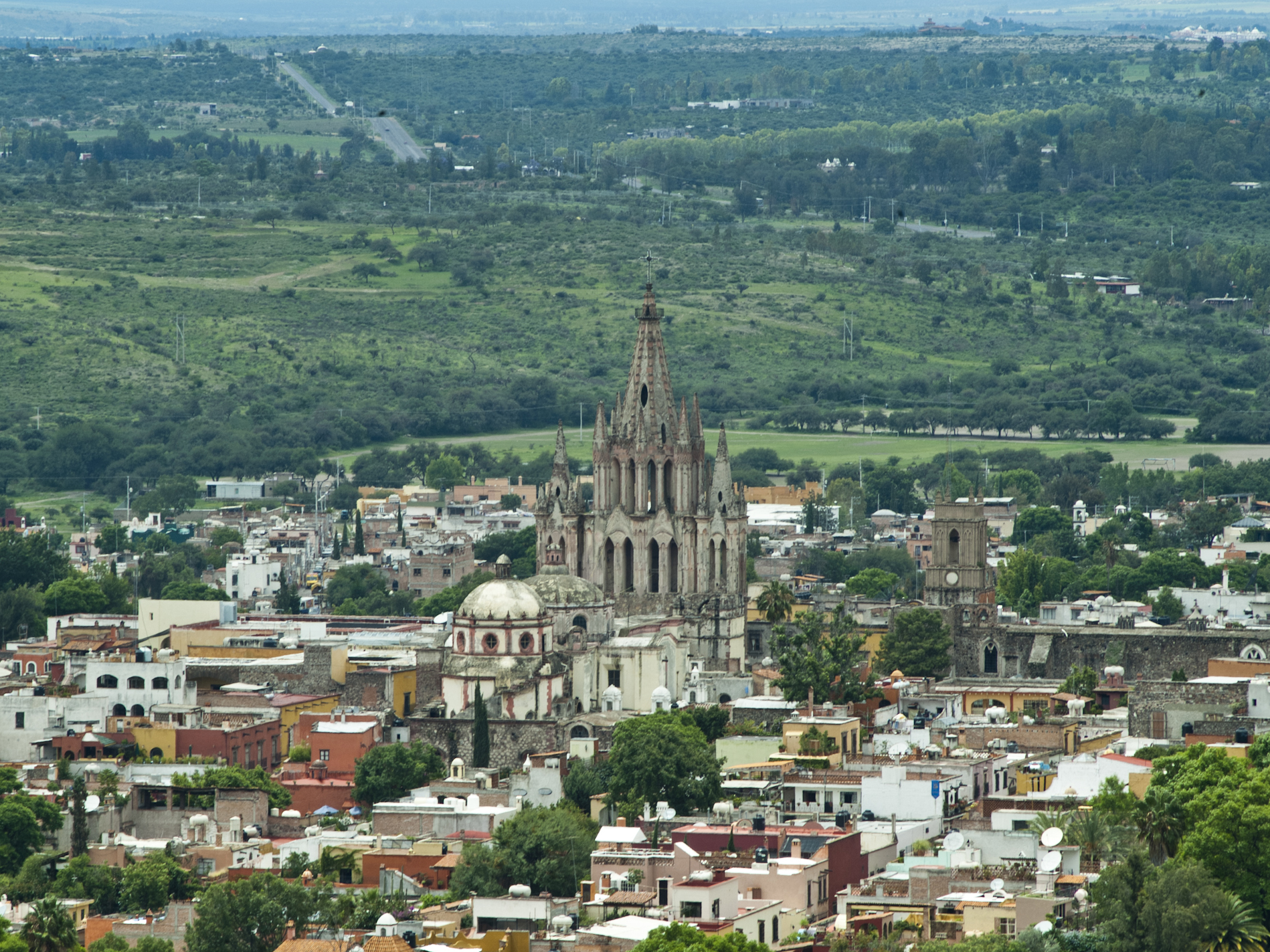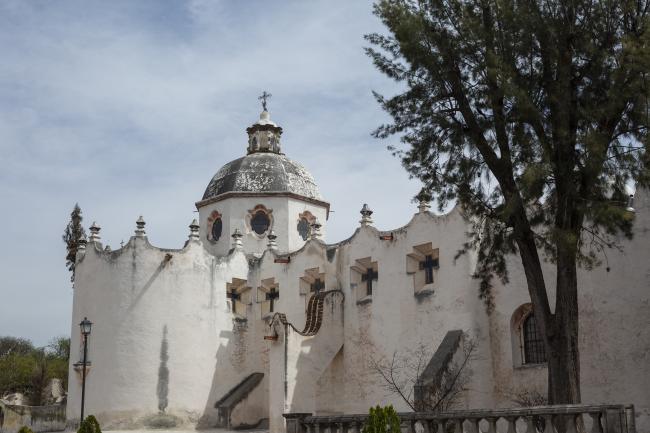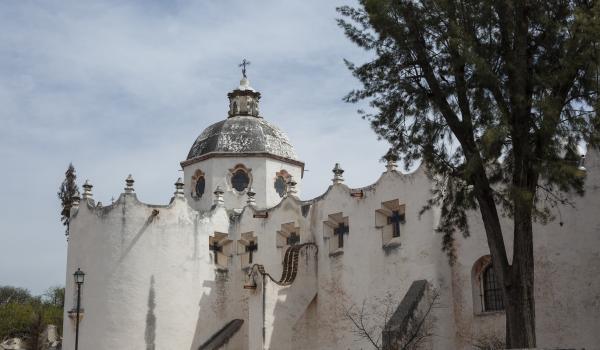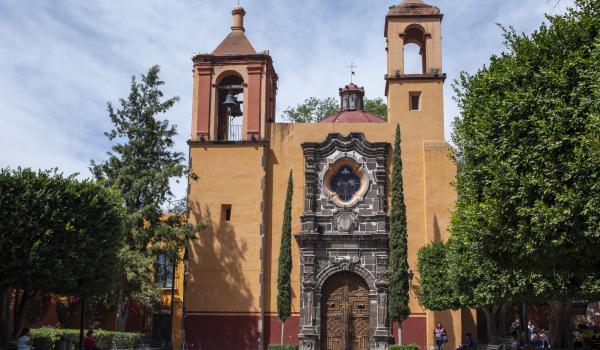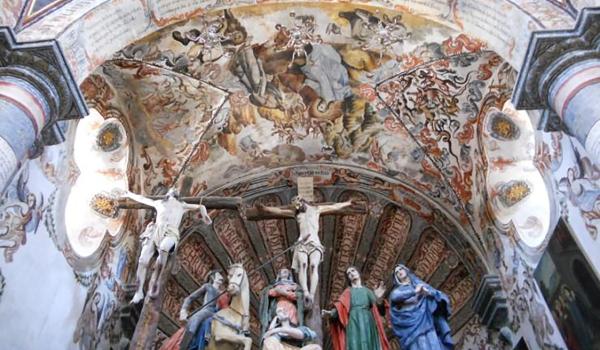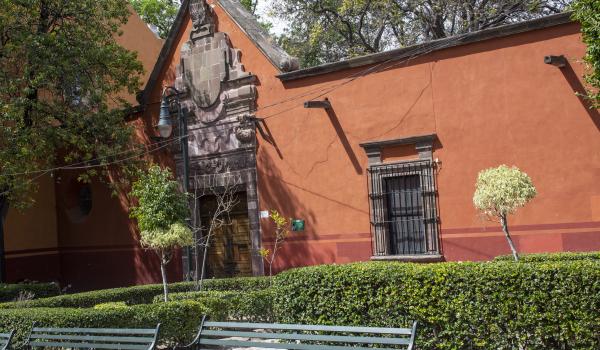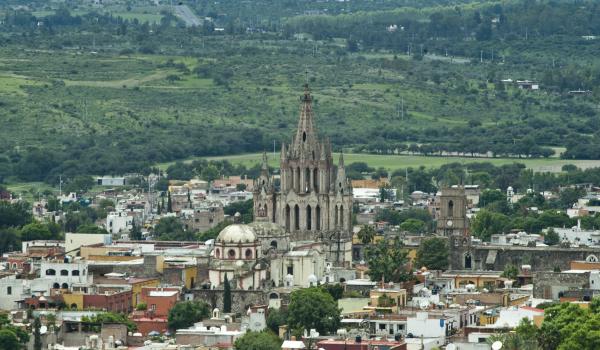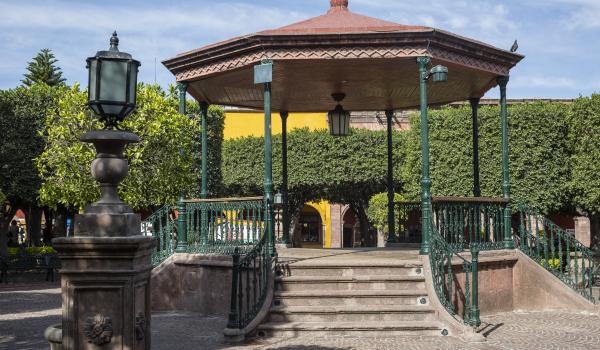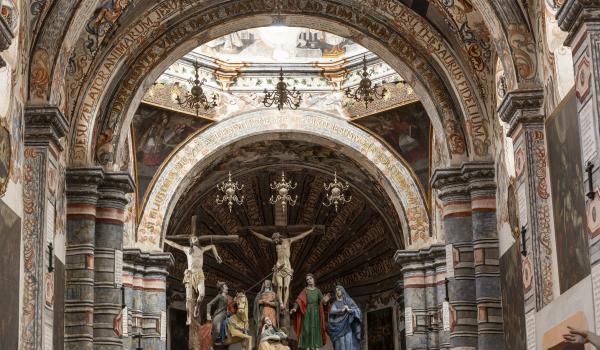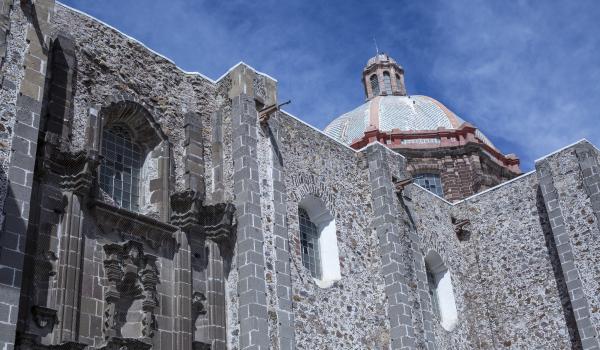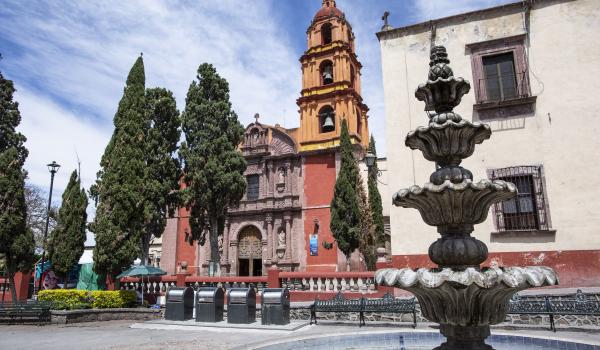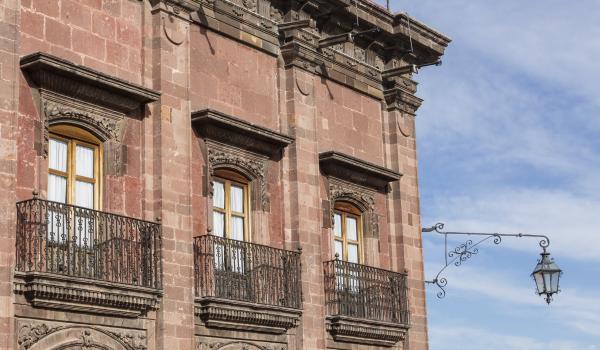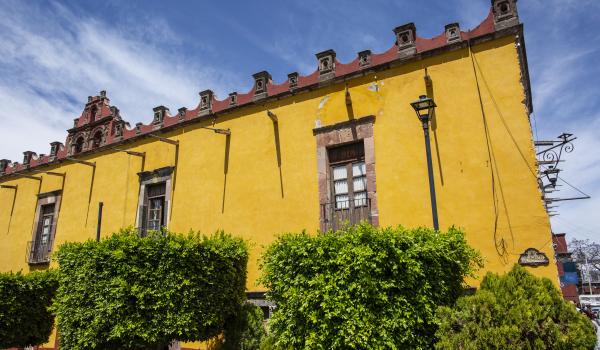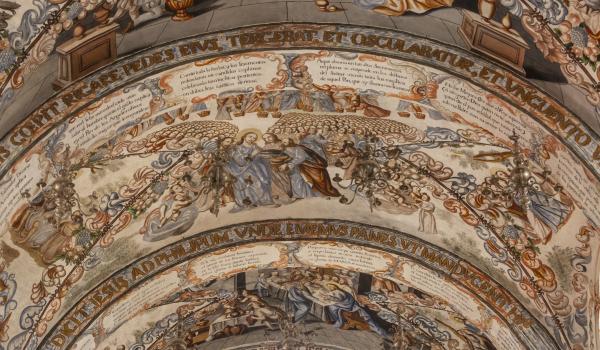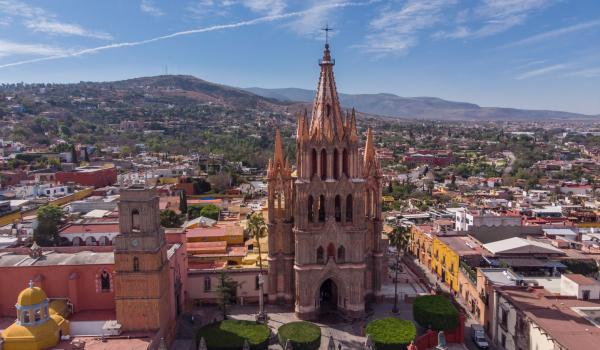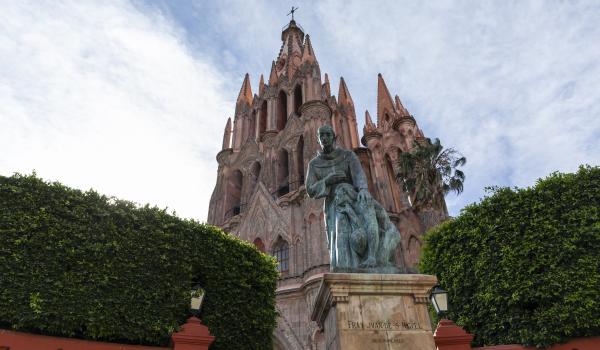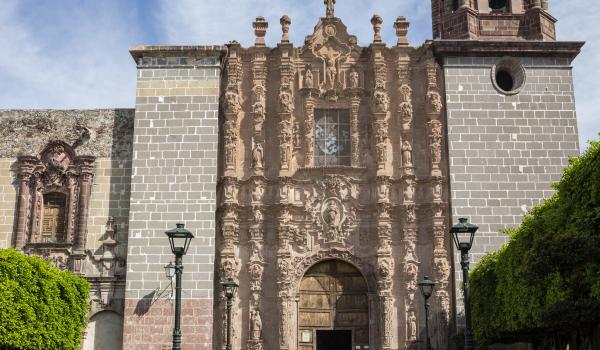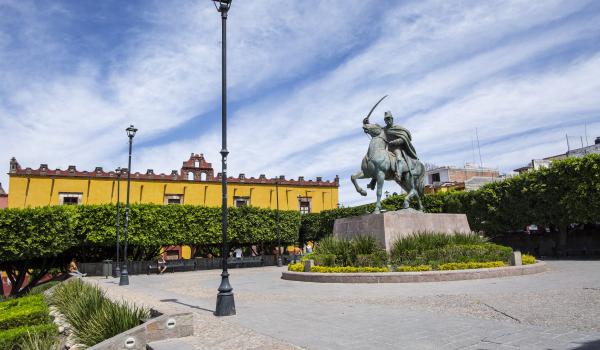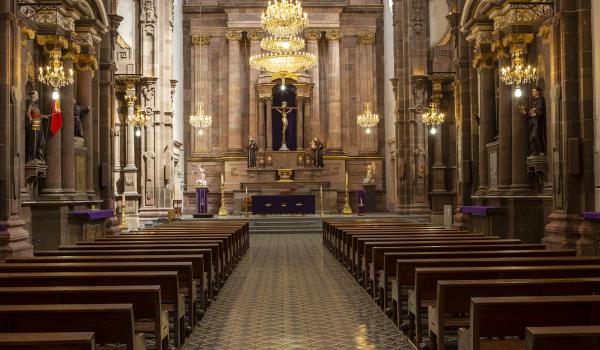Villa Protectora de San Miguel el Grande y Santuario de Jesús Nazareno de Atotonilco
Route element
Villa Protectora de San Miguel el Grande y Santuario de Jesús Nazareno de Atotonilco
Patrimonio mundial
The Villa Protectora de San Miguel el Grande and Sanctuary of Jesús Nazareno de Atotonilco is located in the north-central region of Guanajuato, which before the arrival of the Spanish was occupied by Chichimec Indians extending from Chamacuero to Guanajuato and San Felipe. The first contacts between the natives and the Spanish occurred in the 1520s, but colonization would not take place until 1542.
By the end of the first half of the 16th century, the route connecting Mexico City with the Zacatecas mines began to be opened, leading to the establishment of Spanish settlements in San Miguel and San Felipe, both for defensive purposes. In 1551, the Guamares Indians attacked San Miguel, causing the settlement to be temporarily abandoned. Four years later, to protect travelers, Viceroy Luis de Velasco founded the town of San Miguel. The settlement experienced significant growth due to the establishment of wool and leather workshops, leading to its designation as Villa de San Miguel el Grande by the end of the 17th century.
By the early 18th century, San Miguel had become an important town, inhabited by several wealthy families. Not only was the textile industry renowned, but the production of saddles, knives, machetes, and swords also increased. The economic prosperity of both New Spain and San Miguel el Grande reached its peak during this century. This period saw the construction of some of the most beautiful buildings, both religious and civil, reflecting the Baroque and Churrigueresque styles.
The Sanctuary of Jesús Nazareno de Atotonilco began construction in 1746 and was completed on July 30, 1748. However, throughout the 18th century, chapels were added, and in the 19th century, some courtyards were incorporated. The Oratorians used the site as a place for spiritual retreats where the faithful expiated their sins through penances, which is why the flagellants became very famous there. This sanctuary holds great symbolic value in the War of Independence, as in 1810, Father Miguel Hidalgo y Costilla took as a standard a painting of the Virgin of Guadalupe found in this shrine. The collection of paintings and altarpieces inside the Sanctuary is one of the most expressive representations of popular Baroque art from New Spain, full of color and with a very peculiar style for depicting both divine and human scenes. Most of the paintings found inside the sanctuary are believed to be the work of the painter Miguel Antonio Martínez de Pocasangre.

